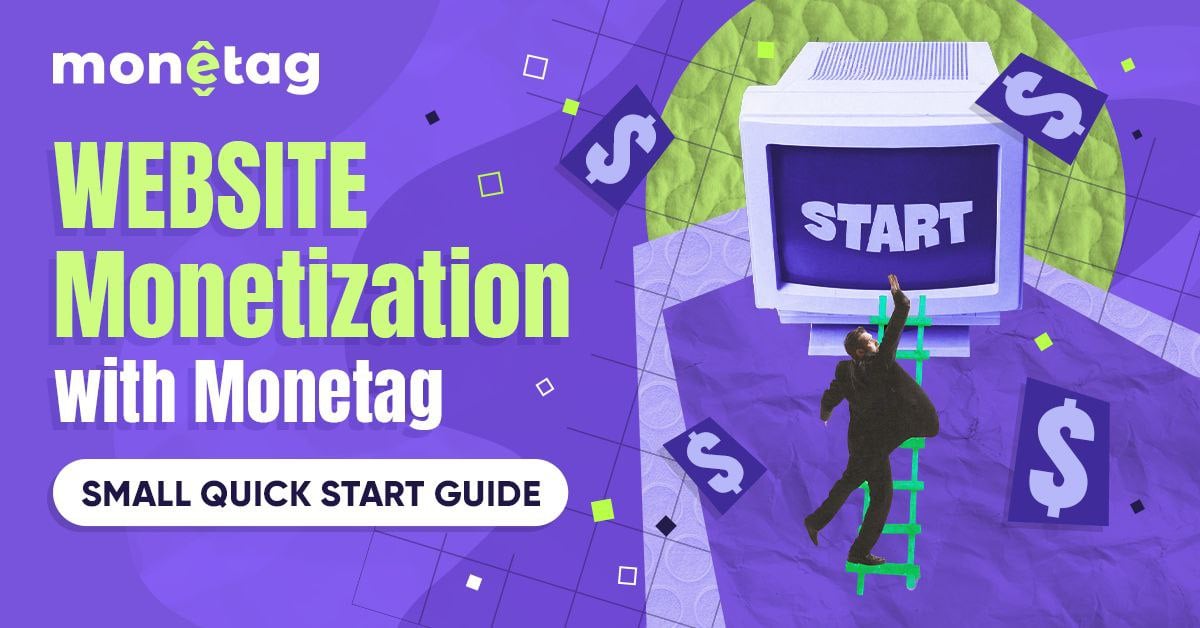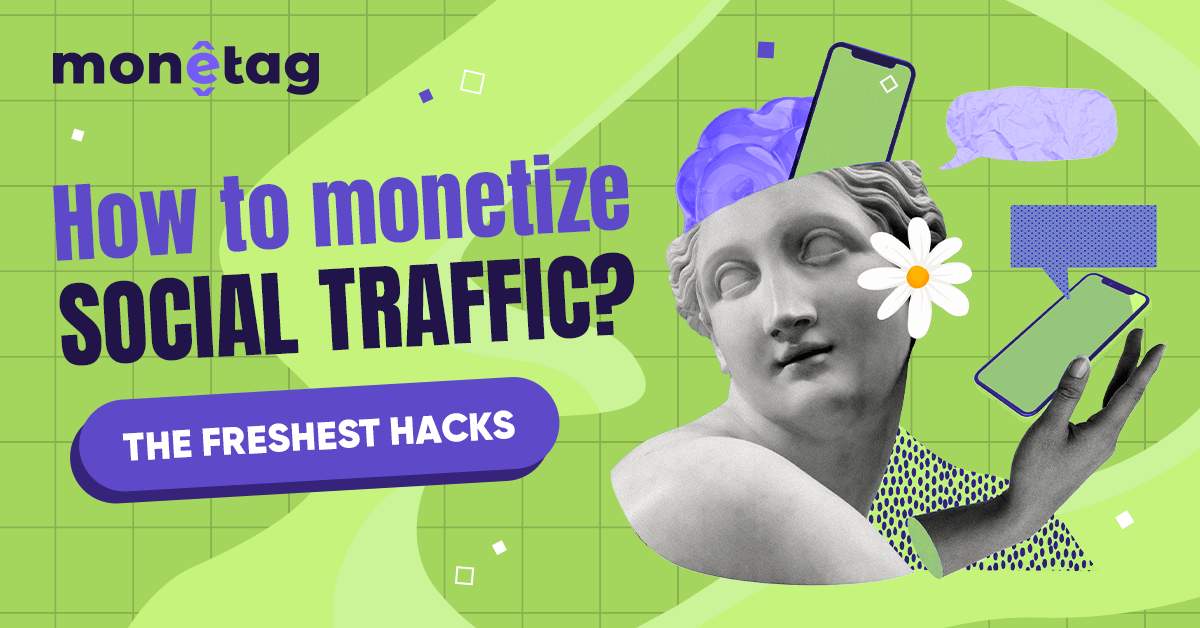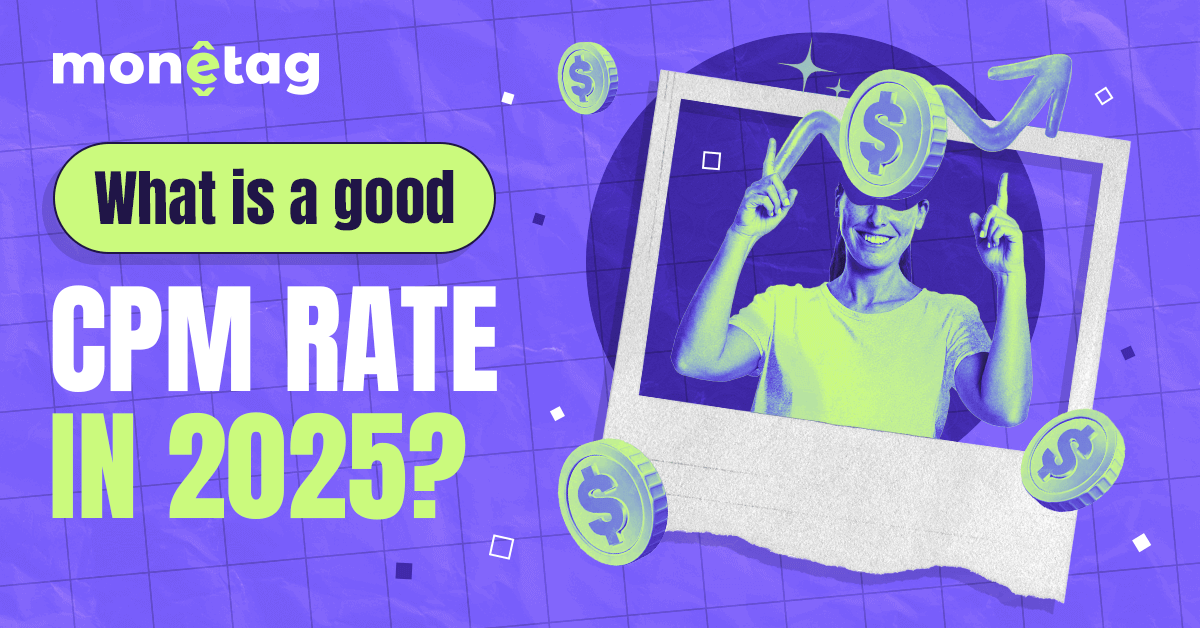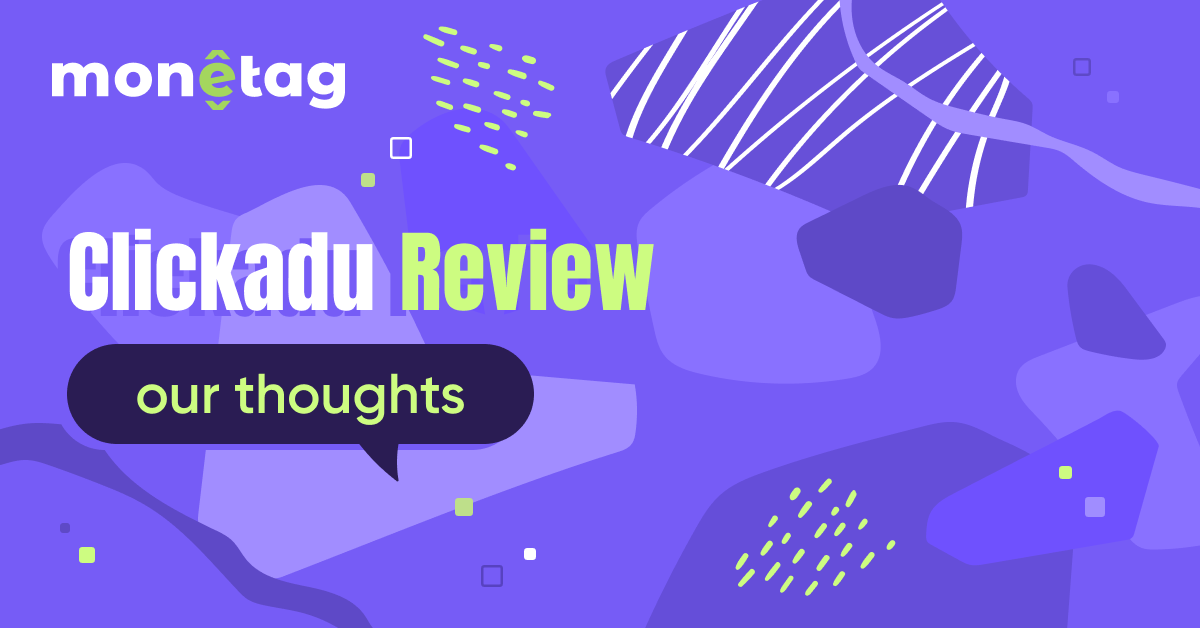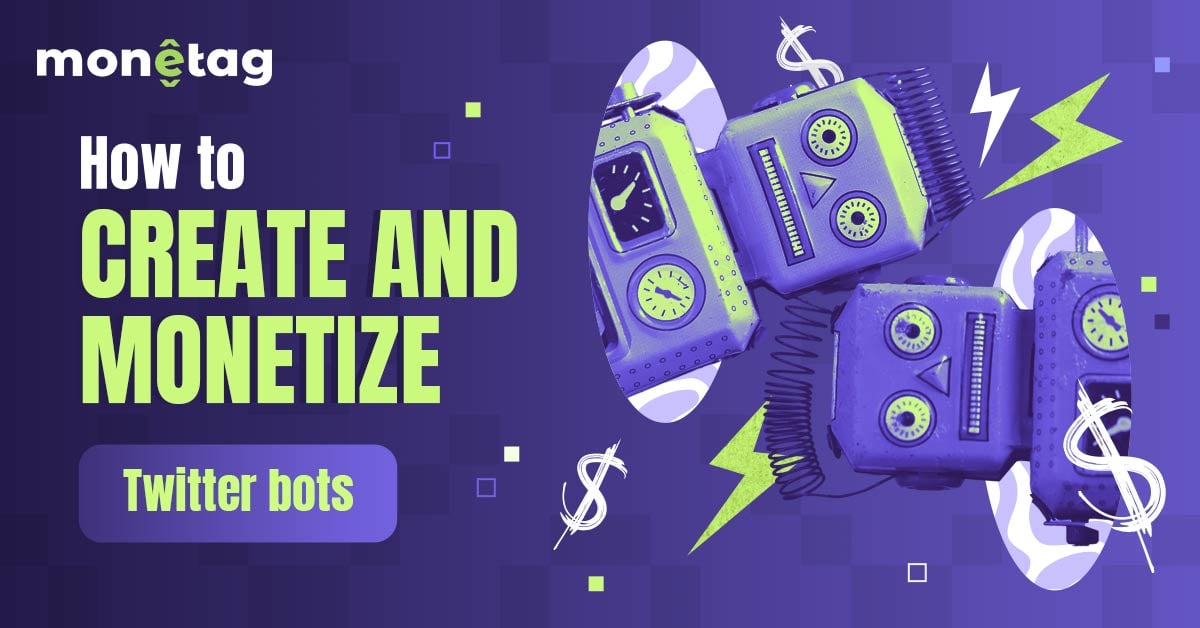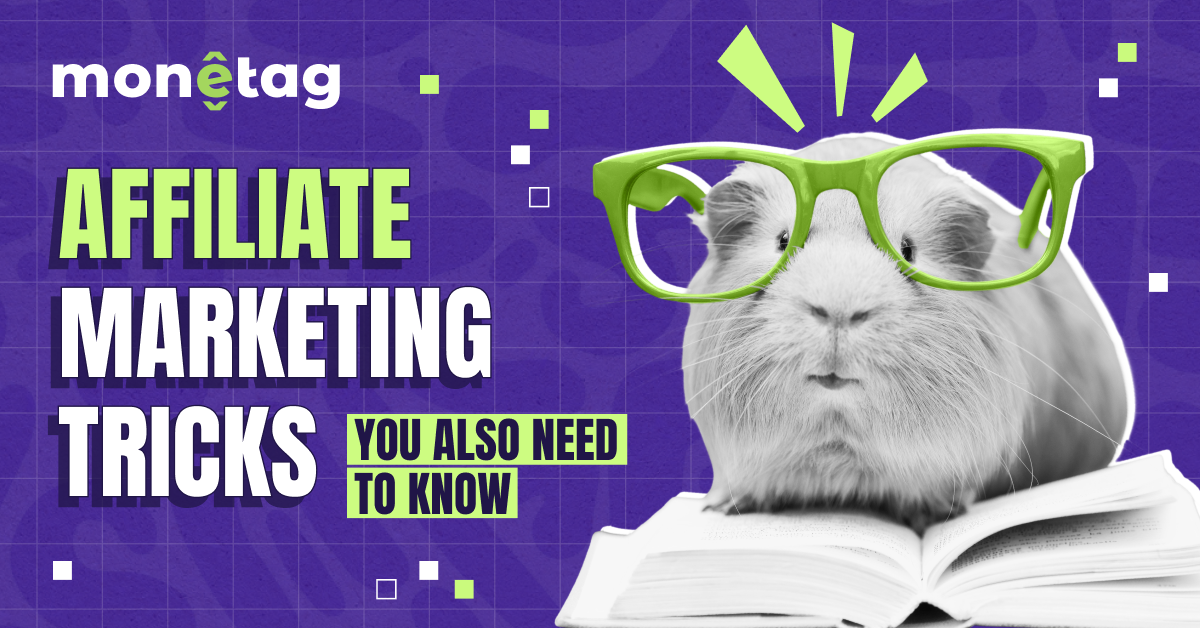| Pros | Cons |
|---|---|
| Faster testing and clearer winners | More tracking complexity – implement UTMs, accurate attribution, and cross-channel reporting |
| Reduced single-channel risk (algorithms change) | Budget dilution if spread too thin |
| Cross-channel lift – one channel can increase the effectiveness of another | Possible cannibalization if you don’t manage overlap |
Traffic Sources How To: Mix, Match, and Monetag
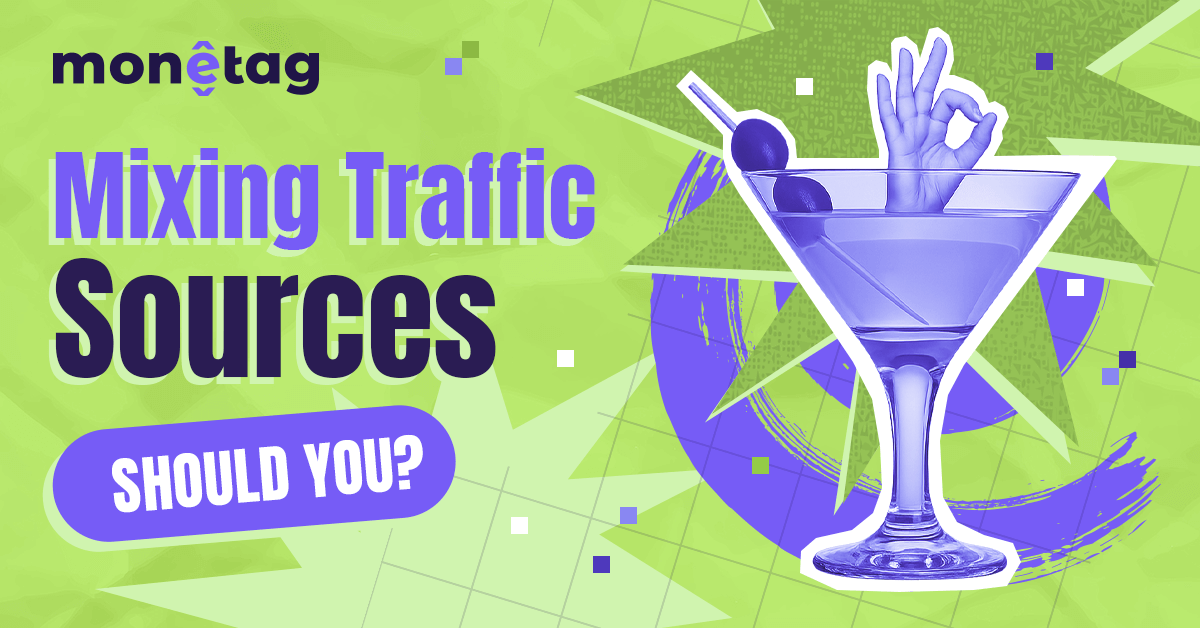
When it comes to traffic sources, you don’t have to pick a favorite, because you can have both/more/all. When you blend web traffic sources right (and here we’re talking about organic, paid, social, referral, or email traffic), you get speed, scale, and signal.
What signal, you ask? The kind that points in the direction of the cash flow. Showing you what works and needs boosting to maximize your ROI.
And, while your job is to send the right traffic mix and measure what pays, Monetag’s job is to turn those signals into cash.
And boy, how it does turn those signals into money!
Still confused about what “traffic sources” are? In short, they’re the channels that deliver visitors to your site. And, as we already mentioned, the most popular traffic sources are search, social, email, paid, referrals, and direct traffic.
Remember this definition and classification, as each source behaves and converts differently.
How Mixing Traffic Sources Works (in Plain Terms)
Let’s zoom in on what really happens when you run multiple channels (also known as cross-channel marketing):
- First off, you get speed from paid ads
In our previous article, you saw that Paid Ads generate almost instant volumes of traffic. This way, you can test pages and creatives much faster than if you’d wait for organic traffic to kick in.
- Second off, you get stability from SEO and organic content
When you take care of your site’s SEO you generate steady, low-cost visits over time. It pays in the long run, but you just need a lot of patience and testing skills to identify what really gets your specific kind of traffic going.
- And finally, third and most importantly, you get insight
Cross-channel data (CTR, Conversion Rate, Geo) reveals which audiences actually buy. Once you have this info, you can pour more resources into generating content for these audiences.
What you need to remember is that search and paid don’t fight. Instead, they inform each other. And according to Search Engine Journal, you can use PPC to validate keywords and content, then scale with organic.
Google’s marketers and data scientists highlight this “halo effect” clearly: when you model marketing mix across channels, investment in one channel often amplifies returns in others. That’s why smart teams run experiments across three or more channels, not just one.
What Mixing Changes for Your Funnel
Mixing traffic sources changes the funnel from linear to layered. Instead of “visitor → page → maybe convert,” you get multiple touchpoints:
User sees your TikTok/ reads a review/ clicks an ad→ Buys via search
Those touchpoints increase your conversion probability. If you track them properly, that is. In fact, HubSpot and other marketers call this cross-channel planning. And the result: reduced reliance on vanity metrics, forcing you to optimize real behavior.
Is Mixing More Effective?
Short answer: usually yes. But only if you measure and optimize correctly. Studies and industry reporting show multi-channel campaigns outperform single-channel ones when coordinated.
“Retailers experienced multichannel sales growth of more than 150% quarterly on average year over year.
Shopify
Integrated campaigns with four or more channels have shown notably higher performance in some studies. You get a bigger net and more predictable scaling if channels are intentionally combined.
How to Mix Traffic Sources the Smart Way?
Here’s what you need to do according to the pros:
- Start with one hypothesis. Test a paid search or social campaign to validate purchase intent.
- Seed content and SEO around winners. Turn converting paid keywords into blog/product pages.
- Track with UTMs and analytics. Attribute conversions fairly, following multi-touch models or marketing mix modelling to avoid cannibalization.
It can happen when certain pages you own compete for the same keywords (paid can steal organic clicks unless measured). - Match formats to intent. Use high-intent paid traffic for direct offers, and then use social and email for awareness and retargeting. (You must measure everything. Don’t assume.)
- Scale what converts. Move budget from underperforming channels into winners and let Monetag monetize all visits.
Pros and Cons of Mixing Traffic Sources
Quick Measurement Checklist
- Track sessions, conversions, and post-click behavior by source
- Use a multi-touch or marketing mix modelling (MMM) approach for strategic decisions
- Monitor incremental lift: check whether paid drive more total conversions, or just take organic clicks
Final Take
Mixing traffic sources isn’t just a marketing fad. It’s how you hedge risk, speed up learning, and scale revenue.
Paid gets you fast answers. Whereas, organic builds durable value. And finally, social and referrals amplify reach.
Remember! You test with paid traffic, validate with the data you gather from it, build with SEO, and then you let Monetag monetize every visit while you scale winners.
Just take your time, even if you need to start small, track hard, and compound what works. In no time, you’ll mix channels for improved speed. And don’t forget to keep an eye on quality, while you use the data you gather to guide budget moves and turn your traffic into profit.
What’s left to do?
